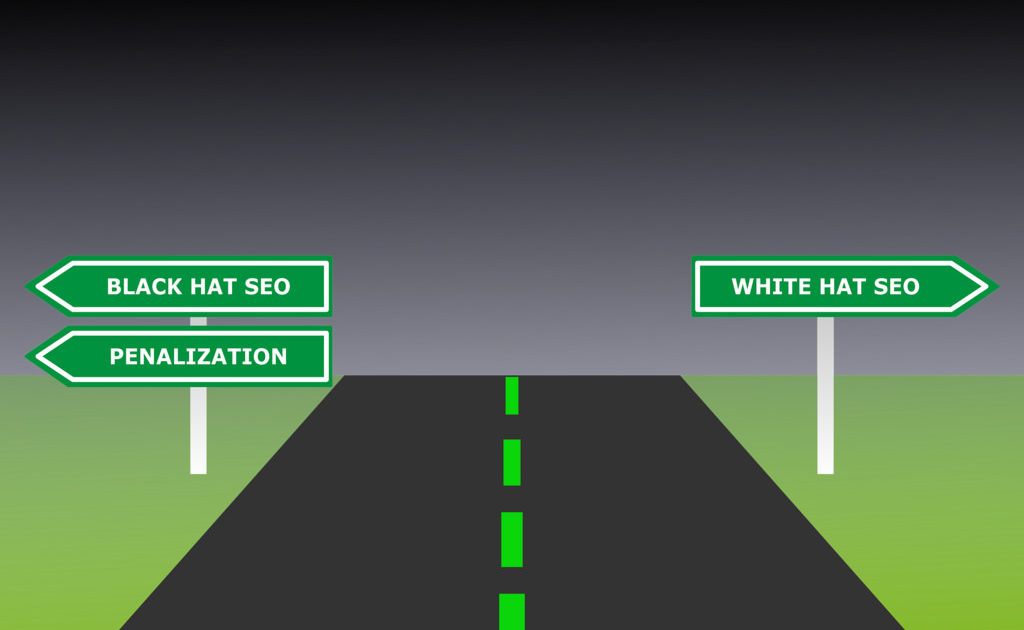Generate Meaningful SEO Results With These 7 Artful Tactics
You’re not the first to have this problem, and you certainly won’t be the last. You’ve packed your site with search engine optimization (SEO) keywords. You’re pumping out new, quality content every day. Your digital content machine is up and running. In fact, it’s positively purring.
But where are all those conversions you’ve been promised?

The answer lies with the SEO techniques you’re using. The algorithms that determine your site’s ranking don’t see all SEO techniques as equals. Some get preferential treatment. And such favoritism means that these techniques deliver better results than others.
To widen up your sales funnel, and get it working at top capacity, you’re going to need to narrow down and optimize the SEO tactics you use. The key lies beyond the keywords. Let’s dive into the deep end of SEO and pull up some treasure.
1) Headings and subheadings bring success in the search engines.
Have you ever heard of Crawler? It’s an algorithm Google uses to search for keywords in a body of text and check it for relevance. Like us, Crawler skims through the more eye-catching text first—headings and subheadings—before crawling its way through the main content.
So where should you put your SEO techniques to good use and focus your keywords?
You’ve guessed it. Head for the headings.
The most important part of your text is going to be your title tag. It’s the first thing Google (and your reader) sees when looking for relevance so make sure you get the right keyword in there.
A word of caution though: Google has caught on to the overuse of headings and subheadings as keyword repositories. It doesn’t appreciate keyword stuffing (more on this in a moment), and penalizes it by favoring the use of keyword groups, used sparingly and effectively in a text that is natural sounding, relevant, and engaging.
Headings have to be artful. That’s why we think they should tell a story.
Narratives in the headings are good for SEO. If written well, they hook the reader, reinforce relevance and draw the attention of the all-powerful algorithm that will propel your page to the top of the rankings.
2) Headings are good, but meta is better.

See this description above? Without blowing our own trumpet, this is an effective meta description. Why?
Because it accurately advertises the page’s content in an eye-catching way, making you more likely to click on it.
Okay, so this is not strictly an SEO hack. In fact, in 2009 Google came out and said that what you have in your meta description won’t affect how it ranks your content—the spoilsports.
Well, at least not directly.
But it still counts among our artful SEO techniques, because while Google’s algorithms won’t reward your keyword-rich meta description with a higher ranking, Google’s users will.
An informative, relevant meta description will increase your CTR (click-through-rate).
Which is basically a jargony way of saying that more people will recognize your page is worth visiting, more people will click on it, and these clicks will push your page higher up the rankings.
3) Use the right SEO keywords to get the right readership.
So your content needs keywords. But where can you go to find them? For SEO warriors like us, the first port of call is Google’s Keyword Planner. First you feed it some keyword ideas. So say you want to promote your London-based tour company. You might write: tours of London, Westminster and Big Ben.
Then you select the category and context you want results for. In this case you want to see what people are searching for when they want tours of Big Ben, not information about who built it, how they built it, or what architectural specifications they were meeting when they built it.
Finally, you select your language and audience, and maybe introduce a link to your landing page, et voilà! You’re in keyword heaven.

Don’t just rely on SEO keywords. Add ideas from Ad Groups too.
Even experienced SEO writers often overlook Ad Groups in favor of its bigger, louder brother: Keywords. But spend some time with Ad Groups and you’ll see it actually has a lot more to say. If you can pick out keywords from these groups that Google has—for want of a better word—grouped together, your text will rank higher for relevance when it comes to the topic it’s dealing with.
“Does this mean I should fill my article with as many of these keywords as possible?”
No. Your text isn’t a chicken; don’t stuff it. Good SEO writing is informative, pertinent, and fundamentally engaging. Like a master chef, a skilled writer will pepper their creation with enough keywords that it fits Google’s culinary requirements. They might sprinkle on a little more according to taste, and add their own stylistic flair for a little extra flavor. But they won’t overpower their reader.
Because going overboard with keywords will make what you serve up indigestible.
4) Search engines like both long- and short-tail keywords.
Long-tail keywords are search phrase that consist of more than two words, while short-tail keywords are phrases made up of one or two.
And that’s the long and short of it.

By nature, long-tail keywords are much more specific than their short-tail counterparts. But they actually make up the vast majority of searches. In fact, around 70% of Google searches contain long-tails of four to six words.
Meaning the good folk at Google optimize content that balances short, general keywords with long, specific ones.
This is what effective SEO writers will do. They will make sure their content attracts searches for the general topic while simultaneously attracting people with specific queries.
5) Avoid Black Hat SEO techniques.
Stuffing your headings with keywords makes for miserable reading. But this doesn’t stop some SEO copywriters from doing it. In the Wild West of SEO copywriting, these cowboys embrace their inner bad guy. And in their short-sighted attempt to get rich fast, they see a short-term spike in the rankings as a price worth paying for a practice that could get their content banned from the top search engines.
Thankfully, Google is on to these conjurers of cheap tricks.
Though it might seem I’m writing to ingratiate myself with Crawler (I’m not), Google is firmly on the good guys’ side in the copywriting Wild West. In fact Google has explicitly come out and said which on-page SEO techniques it considers above board (White Hat) and which it considers below the belt (Black Hat).
But how do I know if my page has become a black-hat stand?
Ask yourself one simple question. Is my reader getting anything from reading this content? If the answer is yes, you have nothing to worry about. If the answer is no, and you think your content might be more spam than substance, you’ll want to rethink your strategy. Fast.

That said, even Black and White Hat SEO techniques can have their gray areas. And the fact there’s a thin gray line between what can get you more conversions and what can get you censored is scary.
Get in touch with us and we’ll be happy to look through your content and tell you what we see.
Or, if you’d rather get yourself up to speed, check out this informative list of Black Hat Techniques.
6) Embrace White Hat SEO techniques.
You’ve followed all the advice so far and now Google is sending so much traffic your way you’re running out of parking. The secret’s out that your page is the place to be; your users know it and so do your competitors. That’s why they’ve hired their own group of SEO copywriters party poopers to try to move the party to their place.
Your job is to make sure people stick around at your place.
We’re simple creatures in the end. While I’m not suggesting you fill your site with flashing lights and loud colors, some multimedia in the form of embedded videos, images, and diagrams will keep people interested and reduce your bounce rate.
And show them how much more you have to offer.
Google has come out and said it ranks supplementary content highly when determining the rankings. The most effective supplementary content comes in the form of relevant, informative links to other parts of your site, used in a way that doesn’t get in the way of your main content.
Want a perfect example of effective internal linking? Look no further than Wikipedia.
7) Make sure your SEO content provides answers.
Why?
Because answers are precisely what you’ve come online to find.
Even the most independent researchers will admit that they like to have things explained to them once in a while. And people curious enough to read up on a topic in the first place are going to want to come away feeling like they’ve learned something they can actually apply in the future.
After all, that’s why you’re still reading.
But more than just feeding your curiosity, providing answers actually works wonders for your rankings. Not least because it forces you to use the golden word of digital copywriting:
Any copywriter can command you to take a certain course of action. Few copywriters can tell you why it’s the course you should take. Actually explaining the reason behind something demonstrates a deeper understanding of the subject. And deeper understanding leads to more relevance which, in turn, leads to a higher conversion rate.
SEO techniques might be changing, but we know how to adapt.
The reality of today’s world is you need to produce content that’s going to get you noticed. Not doing so means putting up barriers against maximizing your business’s potential.
Make time to talk to us today.
We love working with inquisitive folk, and the fact you’re here puts you firmly in that category. If you have any questions about anything we’ve mentioned, or want to find out more about how we can help boost you up the rankings, you know where to find us.
We’re waiting to hear from you.
Schedule your free consultation today.

A 15-year veteran of the journalism and media industries, Ben loves to energize audiences about the frontiers of science, culture and technology — and the ways all these come together.



 (323) 904-8463
(323) 904-8463